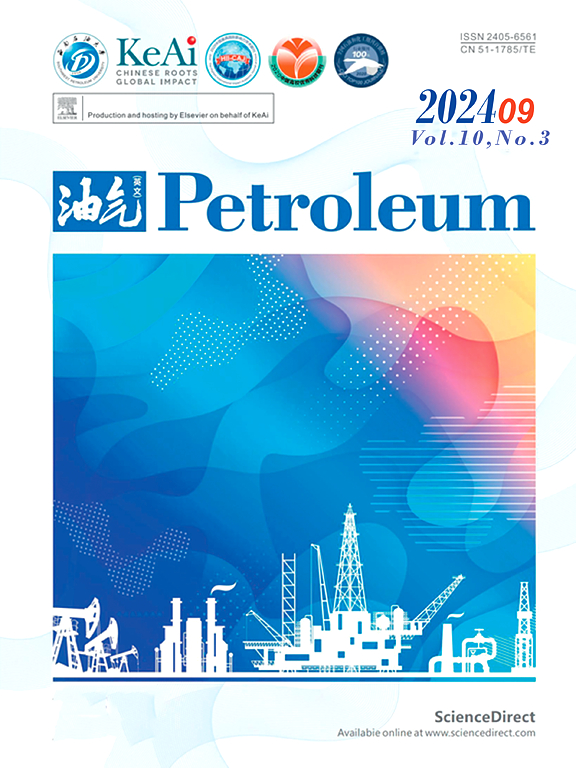基于机器学习算法的井控设备腐蚀缺陷识别与风险评估研究
IF 4.2
Q2 ENERGY & FUELS
引用次数: 0
摘要
本文章由计算机程序翻译,如有差异,请以英文原文为准。
Research on corrosion defect identification and risk assessment of well control equipment based on a machine learning algorithm
In recent years, the risk assessment of well control equipment has faced some problems, such as shallow defect detection depth, large identification error of corrosion defect type, inaccurate equipment corrosion assessment, and so on. To solve the above problems, a corrosion defect classification and identification model based on an improved K nearest neighbor algorithm (KNN) is established for the well control pipeline in well control equipment. Firstly, the pulsed magnetic flux leakage (PMFL) sensor is used to detect the pipeline defects, and then the collected data are denoised. Then, the corrosion type identification model of well control pipeline based on K-means++ and KNN is established. Finally, the corrosion risk of well control pipeline is evaluated according to the type of corrosion output from the identification model. The experimental results show that the improved algorithm has high accuracy in identifying the corrosion type of well control pipeline, and the calculation speed is better than other algorithms described in this paper.
求助全文
通过发布文献求助,成功后即可免费获取论文全文。
去求助
来源期刊

Petroleum
Earth and Planetary Sciences-Geology
CiteScore
9.20
自引率
0.00%
发文量
76
审稿时长
124 days
期刊介绍:
Examples of appropriate topical areas that will be considered include the following: 1.comprehensive research on oil and gas reservoir (reservoir geology): -geological basis of oil and gas reservoirs -reservoir geochemistry -reservoir formation mechanism -reservoir identification methods and techniques 2.kinetics of oil and gas basins and analyses of potential oil and gas resources: -fine description factors of hydrocarbon accumulation -mechanism analysis on recovery and dynamic accumulation process -relationship between accumulation factors and the accumulation process -analysis of oil and gas potential resource 3.theories and methods for complex reservoir geophysical prospecting: -geophysical basis of deep geologic structures and background of hydrocarbon occurrence -geophysical prediction of deep and complex reservoirs -physical test analyses and numerical simulations of reservoir rocks -anisotropic medium seismic imaging theory and new technology for multiwave seismic exploration -o theories and methods for reservoir fluid geophysical identification and prediction 4.theories, methods, technology, and design for complex reservoir development: -reservoir percolation theory and application technology -field development theories and methods -theory and technology for enhancing recovery efficiency 5.working liquid for oil and gas wells and reservoir protection technology: -working chemicals and mechanics for oil and gas wells -reservoir protection technology 6.new techniques and technologies for oil and gas drilling and production: -under-balanced drilling/gas drilling -special-track well drilling -cementing and completion of oil and gas wells -engineering safety applications for oil and gas wells -new technology of fracture acidizing
 求助内容:
求助内容: 应助结果提醒方式:
应助结果提醒方式:


